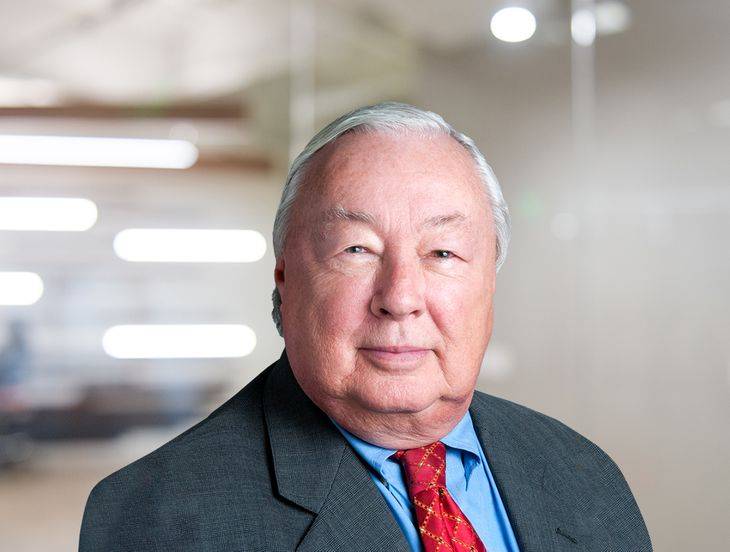Teamster Pension Bailout May Not Be Remedy Employers Hoped For
Insights
12.27.22
Christmas came early this year for the beleaguered Teamsters Central States Pension Fund and its over 350,000 participants – but employers may soon realize they just received a lump of coal in their stockings. On December 8, President Biden announced a $35.8 billion payment to the Fund designed to allow it to remain solvent through the end of 2051. It had been projected to run out of money in 2025, just one of approximately 200 other multiemployer pension funds in the same sinking boat. Altogether, the government expects to pay these funds $74 to $91 billion, according to the Pension Benefit Guaranty Corporation (PBGC), the Federal agency overseeing these plans. But why is it that employers may have a New Years’ hangover despite these bailouts?
Employers May Be Disappointed
At first blush, these bailout payments also look like Christmas for the thousands of employers that contribute to these funds. That’s because Federal bailout money will become plan assets and reduce underfunding, which in turn should reduce withdrawal liability exposure.
“Withdrawal liability” is a statutorily imposed exit penalty requiring employers that stop contributing to multiemployer plans to pay their “share” of plan underfunding. “Share” is in quotes because these amounts also include underfunding attributable to other employers which have withdrawn but did not pay withdrawal liability for various reasons such as bankruptcy. In some cases, that “share” can be hundreds of millions of dollars, dwarfing the value of the contributing employer.
Unfortunately, what looked like a win for employers likely isn’t. For the most part, multiemployer plans have been cagey about future withdrawal liability estimates, telling employers that the impact of bailout money on potential exposure is unknown. All signs, however, point to more bad news for employers.
Strings Attached
Bailout money comes with conditions, and as PBGC stated in recent regulations governing the amount and use of bailout money, “conditions on withdrawal liability are intended to prevent [bailout] payments from leading to significant decreases in withdrawal liability assessments.”
These “conditions” include requirements that plans receiving bailout money use different and very conservative assumptions when calculating underfunding for withdrawal liability purposes. These assumptions are designed to increase withdrawal liability, in some cases more than doubling normal amounts.
Moreover, even though bailout payments are made in lump sums, PBGC “conditions” require that the contributions are phased in for withdrawal liability purposes. In other words, only a portion of the bailout amount received offsets underfunding in withdrawal liability calculations.
Employers May Not Like Calculations, Either
PBGC dealt another blow to employers when it issued separate regulations detailing how funds can calculate withdrawal liability. A number of funds had been using what is called the “Segal Blend” to calculate withdrawal liability, but several federal appellate courts have ruled that the Segal Blend violates the withdrawal liability statute in the absence of PBGC regulations.
The Segal Blend was a favorite of many multiemployer plans because it maximized withdrawal liability. PBGC’s new regulation undercut the courts by stating that computations using the Segal Blend approach were in fact correct, essentially curing the problem identified by the courts and potentially eliminating a defense to withdrawal liability assessments.
Silver Lining for Employers?
The good news for employers is that the law establishing bailouts did not change a fundamental employer protection in the withdrawal liability statute. That protection limits payment of withdrawal liability to installments over a period of 20 years, regardless of the amount of withdrawal liability owed. Since withdrawal liability installments are calculated separately from total withdrawal liability assessed, employers in failing multiemployer plans often have their exposure limited by this 20-year rule.
But the fact that this exposure is already limited in many cases also means that any reductions in underfunding caused by receipt of bailout money won’t have the impact on withdrawal liability that employers were hoping for. For example, if an employer’s overall $2 million withdrawal liability was capped at $1 million because of the 20-year limitation, increases in assets which reduce the employer’s overall exposure to $1.1 million would have no effect on the amount actually owed. That’s because the employer’s actual exposure was already limited to less than $1.1 million.
What’s in Store for the Future?
PBGC has made it quite clear that it will do everything in its power to maximize employer withdrawal liability. Moreover, questions abound about what will happen to plans that receive bailout money when plan assets run out in 2051. Review of approved bailout applications show that funds are projected to again be insolvent at that point, meaning that the $74 to $91 billion payout won’t achieve anything to cure the problems these plans face in the first place.
Until there are changes to the multiemployer system that address the fundamental design flaws that currently exist, multiemployer pension plans remain a great source of concern and exposure for contributing employers. As a general rule, employers who are not yet contributing to multiemployer pension plans should avoid them at all costs, and those that are already in them should look for opportunities to withdraw if the proper circumstances present themselves.
Conclusion
Employers with questions about this situation or how to avoid critical concerns should contact their Fisher Phillips attorney, the author of this Insight, or any attorney in our Employee Benefits and Tax Practice Group or Labor Relations Practice Group. We will monitor this situation and provide updates as necessary, so make sure you are signed up for the Fisher Phillips Insight service to ensure you get the latest news directly to your inbox.
Related People
-
- Robert C. Christenson
- Partner
